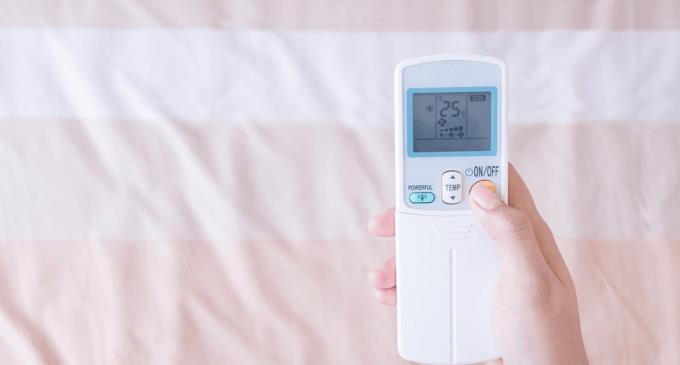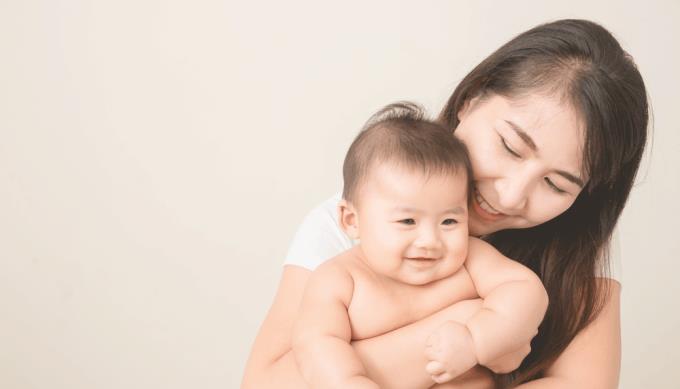Ways to determine an infants caloric needs

Learn how to determine your baby’s caloric needs, including the calories in breast milk and formula, to ensure your infant gets the right nutrition for healthy growth.
It is very important to keep babies warm. In some cases, hypothermia in newborn babies occurs in spite of all your efforts to keep the baby warm.
In the process of taking care of babies, most parents only take care of how to prevent their children from getting sick, fever and forgetting that when the baby's body temperature is lower than normal is also Warning signs of some underlying diseases. In this case, the lack of knowledge and skills to take timely action can lead to serious complications for the child.
If you want to know more about neonatal hypothermia, its causes, symptoms, and how to prevent or prevent the condition in a timely manner, please refer to the article below.
It sounds a bit surprising, but the truth is that despite being a lot lower in weight than an adult, infants have a three times higher ratio of skin surface to body ratio. This makes it easier for children to lose heat than adults. This is worse for premature babies because they do not have enough fat reserves to keep the body warm.
When the child's body temperature gets lower, the child's body tends to compensate so that the temperature adjusts to an equilibrium level. At this time, the baby will have to breathe more to use oxygen as well as store the necessary energy to perform other functions of the body. This affects the respiratory system, blood circulation of the child, causing complications such as apnea, pulmonary hypertension , metabolic disorder ...
Continuously lowering body temperature not only makes it difficult for children to fight other diseases but also increases the risk of hypothermia in infants even more.
Sometimes you touch your baby and be startled to find that the baby's skin is very cold. That will surely make you wonder: Why are you like that? What happened to you? Where is the culprit causing the problem? The following reasons will partly help you to understand better:
Newborn babies are susceptible to infection because the immune system is too weak, the risk is even higher in premature babies (born before 37 weeks of pregnancy ) or born before the deadline. Meningitis or septicemia can all cause hypothermia in a newborn baby. These types of infections can be life-threatening, so medical intervention is needed immediately.

The child's living environment is too cold, like living in the highlands or parents have a habit of letting the child stay in the air conditioner too often. For these cases, the best way is to keep the child warm by various methods.
Sometimes there are other non-environmental factors such as: the baby is wet or has not been dressed for a long time, the mother does not dry the baby after bathing.
It has been found that sometimes a deficiency of certain nutritional factors such as iron, iodine or other nutrients is also the cause of a child's temperature drop. With this situation, you should observe the baby for a few more days, if the condition still does not change, you should take the baby immediately to the nearest medical facility.
One possible explanation for hypothermia in infants is that babies born with a weight of 1.5 kg or less and those born at 28 weeks of pregnancy or earlier are at risk. suffer from this very high condition. Babies who are in this situation may be placed in infant care specials for a few weeks or until their bodies are strong enough to adjust their temperature on their own.
In addition to the above common causes, there are a number of causes that can be caused by a medical condition, such as: hypoglycemia, neurological disorders, metabolic and endocrine problems.
Just like the name suggests, the most recognizable sign a baby is falling into this situation is the baby's body temperature dropping below normal. However, symptoms may vary depending on the severity. There will be three grades: light, medium and heavy.
Mild (baby's body temperature ranges from 36 to 36.5 ° C)
It is cold to touch the child
Children show signs of fatigue or be upset
Your baby's skin sometimes discolored or reddened
The baby has poor feeding expression
Sometimes the child will show a shivering expression
Oxygen deficiency is a common condition
Moderate (baby's body temperature is between 32 and 35 ° C)
Children have difficulty in moving
You may experience uncontrolled shivering
With older children, they may find it difficult to babble or pronounce
Severe or dangerous (body temperature below 32 ° C)
Your baby's pupils may dilate and lose their response to light
Children sleep, lose consciousness
Activities decreased significantly
The reduced heart rate may be below 60
Children lose weight
The baby's pulse sometimes feels weak or difficult to detect
To best determine if your baby is experiencing hypothermia in a newborn, it's best to take the temperature of the anus.
When children have hypothermia, parents should be calm and can take the following measures:

As analyzed above, room temperature is one of the culprits causing hypothermia. Although a newborn can still regulate body temperature, it is not as good as an adult's body. Therefore, it is important that you maintain a constant room temperature. When increasing the room temperature, mothers need to avoid a sudden increase in temperature.
Babies usually do not need a bath, mothers just need to wipe themselves in a small pot with warm water. Alternatively, you can add a baby bath pad if needed.
However, if you want to bathe your baby, wait until the navel is dry and falling. It has been suggested that the bath water for babies shouldn't be too cold or hot. Make sure you test the water carefully before bathing your baby. Don't let your baby spend too much time soaking in water and have to dry himself with a soft towel right after bathing.
Many parents believe that toweling can keep the baby warm and give the baby a feeling almost like the state in the womb. It's also a great way to keep your baby warm when it's too cold in a room or when it's too low outside. However, make sure you do not wrap your baby in a towel when your baby is over 3 - 4 months old. At this point, you can put your baby in jumpsuits to keep warm.

Most doctors will place the baby on the mother's chest right after birth as this helps build a bond between mother and baby. In fact, it's also a great way to give your baby warmth. This "Kangaroo"-style child care is a way of bringing close contact between mother and baby, thereby helping the baby to regulate his or her body temperature.
You should monitor the child's temperature regularly to promptly detect any changes in the baby's temperature. This allows you to take prompt action if something unusual occurs. A digital thermometer is a good choice to check your baby's body temperature. You can take your baby's temperature before and after bathing or when you expose your baby to an air-conditioned environment.
Low body temperature is not good for babies. If your baby's temperature drops below 32 ° C, this is a sign of severe hypothermia and requires immediate medical attention. As soon as you find out your baby's temperature is at this level, you should contact your doctor for the best treatment. Delayed medical intervention can cause dangerous complications, organ failure and fatal problems in children.
For babies, a good way to protect your baby is to seek the advice of a doctor when there are dangerous health problems. In addition, mothers need to master the necessary knowledge as well as consult timely handling measures to be able to take better care of the baby.
Learn how to determine your baby’s caloric needs, including the calories in breast milk and formula, to ensure your infant gets the right nutrition for healthy growth.
Discover the top 5 smartest dog breeds in the world, including Border Collie, Poodle, German Shepherd, Golden Retriever, and Doberman Pinscher. Learn about their unique traits and why they are considered the most intelligent dogs.
Discover 7 nutritious and delicious ways to cook egg porridge for babies, including recipes with cheese, pumpkin, tomato, and more. Learn how to prepare baby-friendly egg porridge with our expert tips.
After a series of medical measures they obtained a complete human vascular system profile.
Watermelon is one of the fruits that many people love, not only cheap but also delicious, nutritious and refreshing in the summer. To get delicious watermelon pieces, show off your housewives, your artistic talents to cut beautiful pieces of watermelon.
aFamilyToday Health - The digestive system and body in each baby is different. Parents need to recognize notes to deal with when babies have a food allergy!
Babies need many factors for perfect development. aFamilyToday Health shares with parents things to keep in mind when babies are 8 weeks old so that parents can take care of their babies the best!
Babies need many factors for perfect development. aFamilyToday Health shares with parents things to keep in mind when babies are 18 weeks so that parents can take care of their babies the best!
Babies need many factors for perfect development. aFamilyToday Health shares with parents things to keep in mind when babies are 28 weeks old so that parents can take care of their babies the best!
Babies need many factors for perfect development. aFamilyToday Health shares with parents things to keep in mind when babies are 32 weeks old so that parents can take care of their babies the best!








